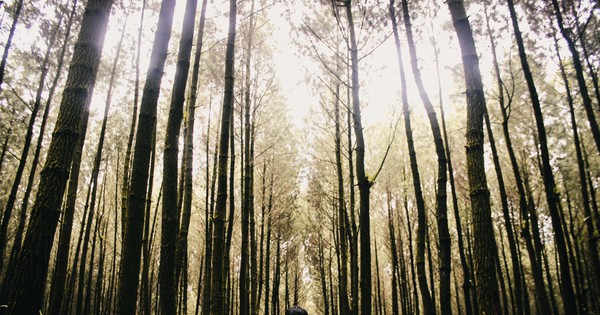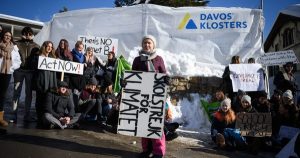Can planting a trillion trees reverse the damage of climate change?

Restoration ecologist Karen Holl explains why it’s not that simple.
Last year there was some very encouraging research that found there is room for an extra 0.9 billion hectares of canopy cover which could store 205 gigatonnes of carbon. The researchers wrote that this wasn’t “just one of our climate change solutions, it is overwhelmingly the top one.”
Unfortunately, within a matter of days we had to take off our party hats when the workings of that study began to fall apart. And while a lot of us want to believe that the trees will save us, restoration ecologist Karen Holl explains why planting trees alone can’t mitigate the climate crisis.
Holl hails from the University of California Santa Cruz (UCSC) and penned a commentary in the journal “Science,” the gist of which confirms that planting trees alone is not a fix for climate change.
“We can’t plant our way out of climate change,” says Holl, a professor of environmental studies at UCSC and a leading expert in forest restoration. “It is only one piece of the puzzle.”
Holl and coauthor Pedro Brancalion, a professor in the Department of Forest Sciences at the University of São Paulo, warn that just planting trees is not a simple fix for environmental degradation.
That said, planting trees is obviously not without benefit; reforestation improves biodiversity, water quality, and increases shade, they point out. And it’s definitely good for our spirit.
“Trees are deeply entrenched in the human psyche,” says Holl, “It’s very satisfying to go out and put a tree in the ground. It’s a concrete, tangible thing to do.”
But depending on where and how it is done, tree planting can have the opposite of its intended effect; reforestation can be harmful to native ecosystems and species and stress the water suppl. It can also dispossess local landholders and increase social inequity.
“Planting trees is not a simple solution,” she says. “It’s complicated, and we need to be realistic about what we can and cannot achieve. We need to be thoughtful and plan for the long term.”
Holl and Brancalion arrived at four principles that they recommend for those undertaking forest initiatives:
Reduce forest clearing and degradation
Protecting and maintaining intact forests is more efficient, more ecologically sound, and less costly than planting trees, or replanting.View tree planting as one part of multifaceted environmental solutions
Enhanced tree cover is one of the best options to offset a portion of the greenhouse gas emissions driven by human activities, but they represent only a small portion of the carbon reductions that are needed – and estimates vary by more than tenfold depending on variables used in modeling.Balance ecological and social goals
Acknowledge competing land uses and focus on landscapes with the potential to generate large-scale benefits, such as the Atlantic Forest in Brazil, where regional planning of tree planting initiatives can lead to three times the conservation gains at half the cost.Plan, coordinate, and monitor
Work with local stakeholders to resolve conflicting land-use goals and ensure maximum effectiveness over the long term. Planting trees doesn’t ensure they will survive; a review of mangrove forest restoration efforts in Sri Lanka following the 2004 tsunami showed fewer than 10 percent of trees survived in 75 percent of sites.
It’s easy to get carried away by the feel-good effect of planting trees, but there is just so much to consider, especially the impact these efforts have on local communities. As Holl notes, “Much of the land proposed for tree planting is already being used to grow crops, harvest timber, and other subsistence activities, so tree planting initiatives need to consider how landowners will earn income. Otherwise, activities such as agriculture or logging will just move to other lands”
An important point that she makes is that increasing forest cover is not the same thing as planting trees.
“The first thing we can do is keep existing forests standing, and the second is to allow trees to regenerate in areas that were formerly forests,” says Holl. “In many cases, trees will recover on their own – just look at the entire eastern United States that was deforested 200 years ago. Much of that has come back without actively planting trees. Yes, in some highly degraded lands we will need to plant trees, but that should be the last option since it is the most expensive and often is not successful. I’ve spent my life on this. We need to be thoughtful about how we bring the forest back.”
And of course, the most important part of mitigating climate change doesn’t have to do with trees at all; we need to stop burning so much fossil fuel. “Trees are a small piece of what needs to be a broader strategy,” says Holl. “We’re better off not releasing greenhouse gases to begin with.”
So go ahead and make a donation to a tree-planting organization and if you have the space, plant some trees! But more importantly, we all need to be doing whatever we can to whittle down our carbon footprints. And you can do both: Feel good by planting a tree … while you’re living a 1.5 degree lifestyle.
Restoration ecologist Karen Holl explains why it’s not that simple.
Please enable JavaScript to view the comments.







